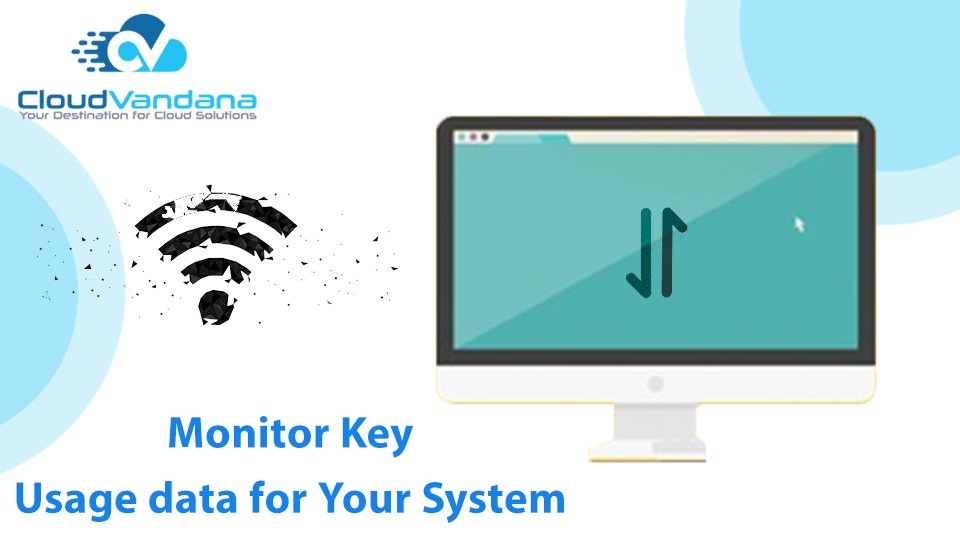Monitor Key Usage data for Your System

Learn how to monitor key usage data for your system to boost performance, detect issues early, and make data-driven decisions. Discover best practices, metrics, tools, and expert strategies. Table of Contents Introduction What Is Usage Data? Why Monitoring Usage Data Matters Operational Efficiency and Resource Allocation Proactive Problem Detection and Resolution Product Improvement Through Behavioral Analytics Strategic Decision-Making Driven by Real-World Usage Common Types of Usage Metrics to Monitor User Session Frequency and Duration Feature Utilization Trends System Load and Performance Bottlenecks Error Rates and Failure Patterns Licensing and Quota Tracking Behavioral Analytics and User Journeys Real-Time vs. Historical Monitoring Tools for Monitoring Usage Data KPIs and Benchmarks to Track Event Tracking and Instrumentation Alerts and Thresholds Usage Data and Capacity Planning Compliance and Privacy in Usage Monitoring Visualizing Usage Data Effectively Cross-Team Benefits of Usage Data Common Pitfalls and How to Avoid Them Success Stories: Monitoring in Action Integrating Usage Data with DevOps and ITSM Feedback Loops and Continuous Improvement Future Trends in Usage Monitoring Conclusion Get Strategic Insights with CloudVandana YOU MIGHT ALSO LIKE Introduction In a world increasingly reliant on software systems, understanding how those systems are used has become a business imperative. Monitoring key usage data is no longer a luxury reserved for DevOps teams—it’s the nerve center of system performance, user satisfaction, and product evolution. Without visibility, you’re navigating blind. What Is Usage Data? Usage data refers to the digital breadcrumbs users leave behind when they interact with a system. It’s the amalgam of actions, patterns, transactions, and behaviors that form a real-time map of how the system is consumed. This data can be structured (logins, feature clicks, API calls) or unstructured (logs, feedback, error messages). From user sessions to memory spikes, it all counts. Why Monitoring Usage Data Matters Operational Efficiency and Resource Allocation By tracking usage, teams can identify which services are under- or over-utilized. You avoid over-provisioning infrastructure or ignoring underperforming modules. Efficiency becomes measurable. Proactive Problem Detection and Resolution Monitoring catches anomalies before they become outages. When a sudden spike in failed login attempts or database query times emerges, your alerting system should respond before your users do. Product Improvement Through Behavioral Analytics Usage data reveals what features people actually use—not what you think they use. This data validates hypotheses, shapes roadmaps, and refines UI/UX flows based on empirical evidence. Strategic Decision-Making Driven by Real-World Usage Executives can make informed decisions when backed by usage trends. Whether it’s prioritizing integrations or investing in mobile-first design, the data doesn’t lie. Common Types of Usage Metrics to Monitor User Session Frequency and Duration Track how often users return and how long they stay. Frequent, long sessions indicate stickiness. Short, one-off logins might flag disengagement. Feature Utilization Trends Are your key features being ignored? Monitor button clicks, module accesses, and tool adoption over time to guide feature development. System Load and Performance Bottlenecks CPU, memory, bandwidth—monitor them all. These indicators highlight where the system is strained and when to scale. Error Rates and Failure Patterns 5xx errors, failed API calls, form validation issues—these hidden failures degrade user trust and must be surfaced in real time. Licensing and Quota Tracking Track API limits, user entitlements, and storage usage. This data helps forecast renewals, upsells, or usage abuse. Behavioral Analytics and User Journeys Understanding not just what users do but how they move through your system gives unparalleled insight. Heatmaps, funnel tracking, and path analysis illuminate behavior patterns that static analytics miss. Spot where users drop off, repeat actions, or fail to complete tasks. These friction points offer your highest ROI opportunities. Real-Time vs. Historical Monitoring Real-time monitoring is essential for live issues—think downtime, spikes, or security anomalies. Historical monitoring helps detect trends and seasonal patterns. Use real-time to react. Use history to predict. Tools for Monitoring Usage Data Popular tools include: Choose tools that align with your tech stack and business objectives. KPIs and Benchmarks to Track Every system has its critical KPIs: Benchmark against past performance and industry peers. Event Tracking and Instrumentation Design your system to emit meaningful events. Log not just errors, but successes, time-on-task, and conditional behavior. Structure events with context: user ID, timestamp, browser, API version. This detail transforms logs into intelligence. Alerts and Thresholds Set smart thresholds for alerts—not just static limits, but dynamic, behavior-driven triggers. Use severity levels: critical, warning, info. Avoid alert fatigue by tuning precision. An over-alerting system gets ignored. Usage Data and Capacity Planning Usage trends inform when to scale servers, upgrade databases, or adopt cloud elasticity. Capacity is no longer guesswork—it’s modeled on actual usage curves. Compliance and Privacy in Usage Monitoring Collect only what’s necessary. Anonymize where possible. Respect consent. Stay compliant with: Your data strategy should balance insight with integrity. Visualizing Usage Data Effectively Raw numbers are noise. Dashboards transform metrics into meaning. Use: Make your insights human-readable. Cross-Team Benefits of Usage Data One dataset, many interpretations. Common Pitfalls and How to Avoid Them Be intentional. Be analytical. Success Stories: Monitoring in Action One fintech company noticed a 40% increase in failed API calls on Mondays. Investigation revealed a billing batch process overloading memory—something they couldn’t have discovered without usage tracking. Another SaaS firm found that their most clicked feature was buried in a submenu. Repositioning it to the dashboard increased user engagement by 30%. Integrating Usage Data with DevOps and ITSM Feed logs and alerts into systems like Jira, ServiceNow, or PagerDuty. Use CI/CD tools like Jenkins or GitHub Actions to deploy based on real-time feedback loops. Usage data isn’t just for dashboards—it’s a workflow input. Feedback Loops and Continuous Improvement Usage monitoring is central to agile development. Sprint retrospectives fueled by data yield faster iteration and fewer assumptions. Usage data isn’t static—it should evolve as the product evolves. Future Trends in Usage Monitoring The monitoring of tomorrow is adaptive, not reactive. Conclusion Usage data is no longer just a backend concern—it’s the lifeblood of intelligent systems. Whether you’re chasing uptime, product-market fit, or user delight, monitoring key usage data






